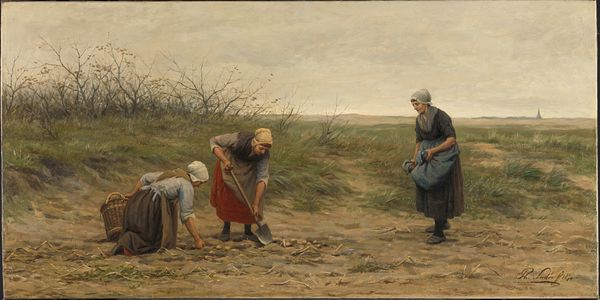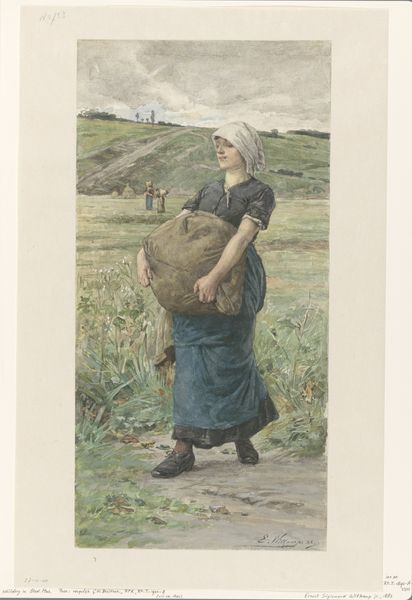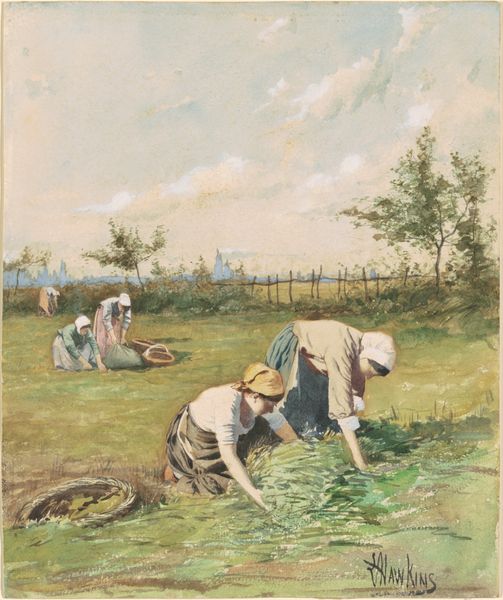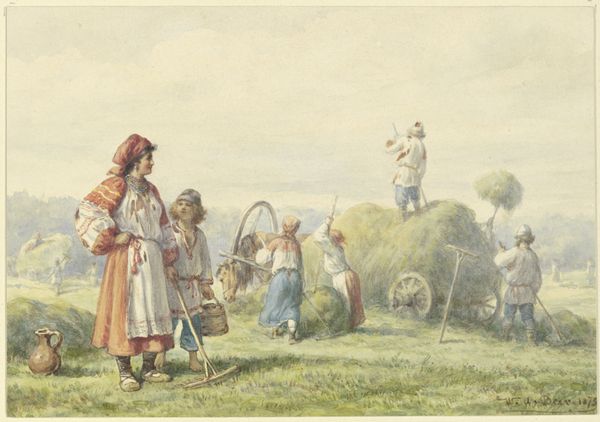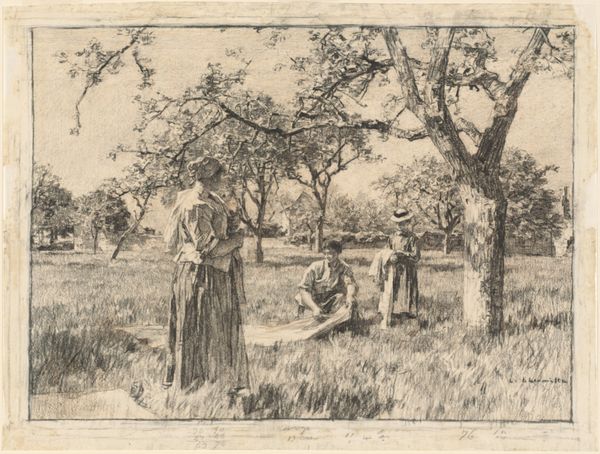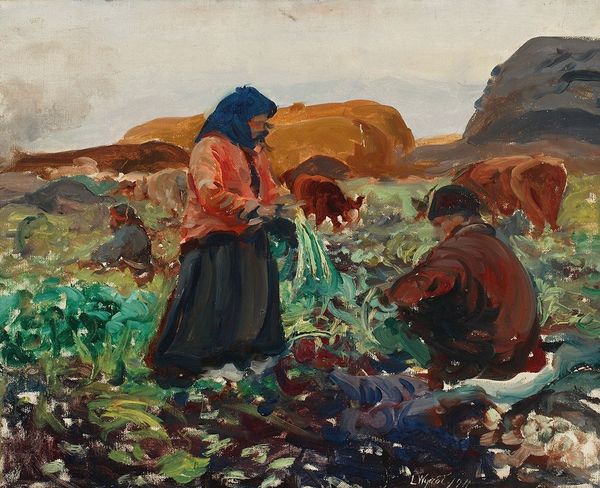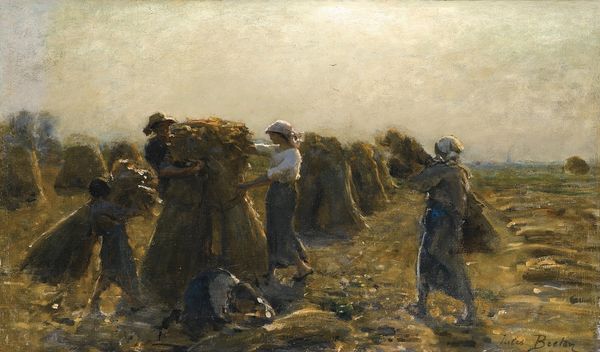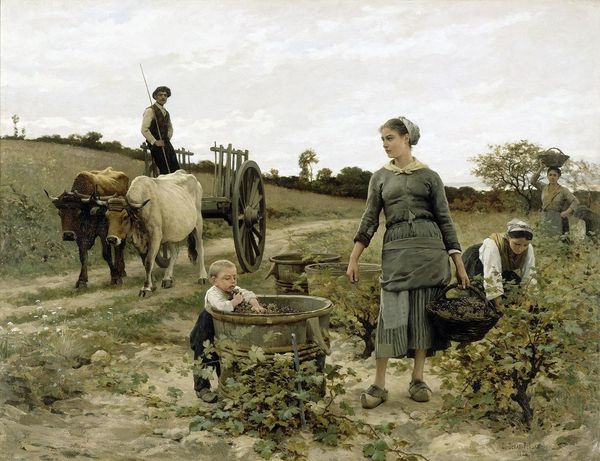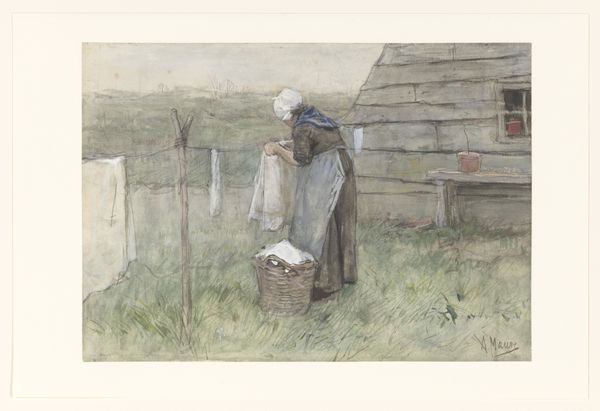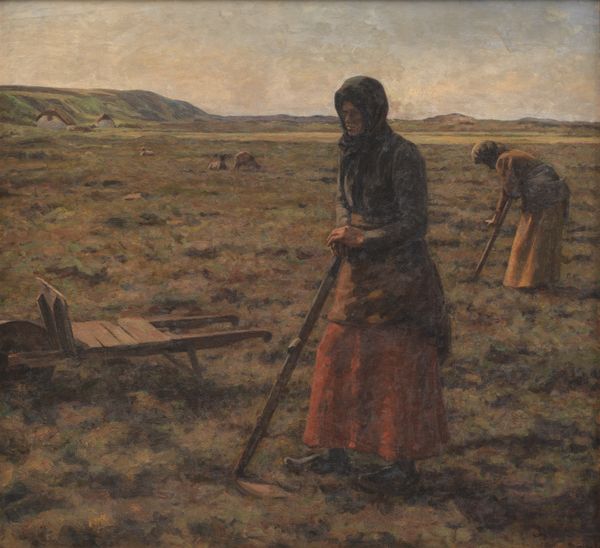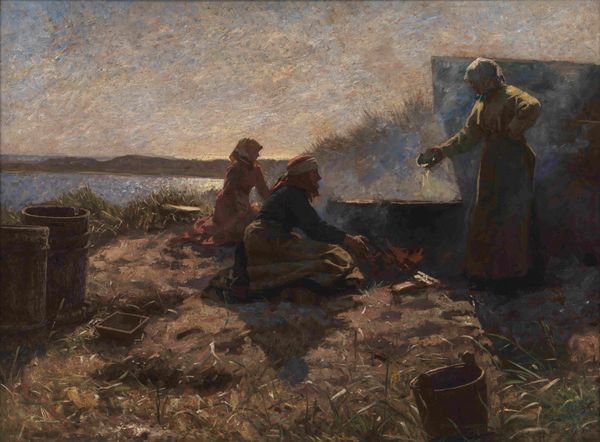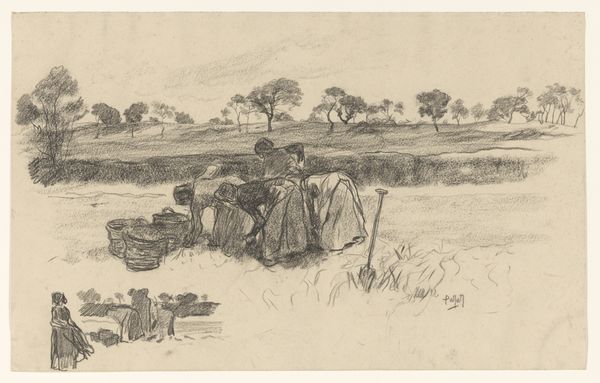
Copyright: Public Domain
Editor: Here we have Wilhelm Amandus Beer’s “Russische Bauern beim Wasserholen an der Quelle,” painted in 1898, using watercolor on paper. It shows Russian peasants gathering water. It seems to me, at first glance, to depict a scene of communal labor, something almost…idyllic. What do you see in this piece? Curator: I see a very deliberate construction of rural labor. Look at the way Beer renders the buckets, the source. It highlights not just the activity, but the very means of sustenance. What materials were used to create those buckets, who shaped them, and how does that intersect with the social hierarchy of the time? Editor: So, you are suggesting to move beyond just the subject and focus on how it’s produced? Curator: Precisely. Consider also the watercolor technique. Its lightness, its accessibility compared to oil paints – how might that choice of medium reflect Beer’s engagement with Realism and a desire to represent, and perhaps elevate, everyday life? How available was watercolor on paper to Russian artists? Editor: That makes sense. I hadn’t thought about the socioeconomic implications of even the materials chosen. I suppose I was caught up in the apparent simplicity of the scene. Curator: Simplicity is often a crafted illusion. Think about the clothing; spun, dyed, sewn, all forms of labor contributing to the scene. Does Beer idealize the hardship of these peoples’ life, and gloss over social issues and inequality, for an external, western gaze? Or is it an effort to truly document the value of their labor? Editor: So, instead of simply accepting the image at face value, we should consider it a constructed view dependent on social and economic forces… both within the painting and around the artist? Curator: Exactly. It compels us to consider the complexities inherent in depicting any form of labor, to understand its social fabric. Editor: I definitely have a new perspective. Thank you! I now look at art from the perspective of not just *what* it shows, but *how* its made, who made the raw materials, and who it's actually *for.* Curator: And that perspective will continue to reveal more to you with every artwork you encounter.
Comments
No comments
Be the first to comment and join the conversation on the ultimate creative platform.
